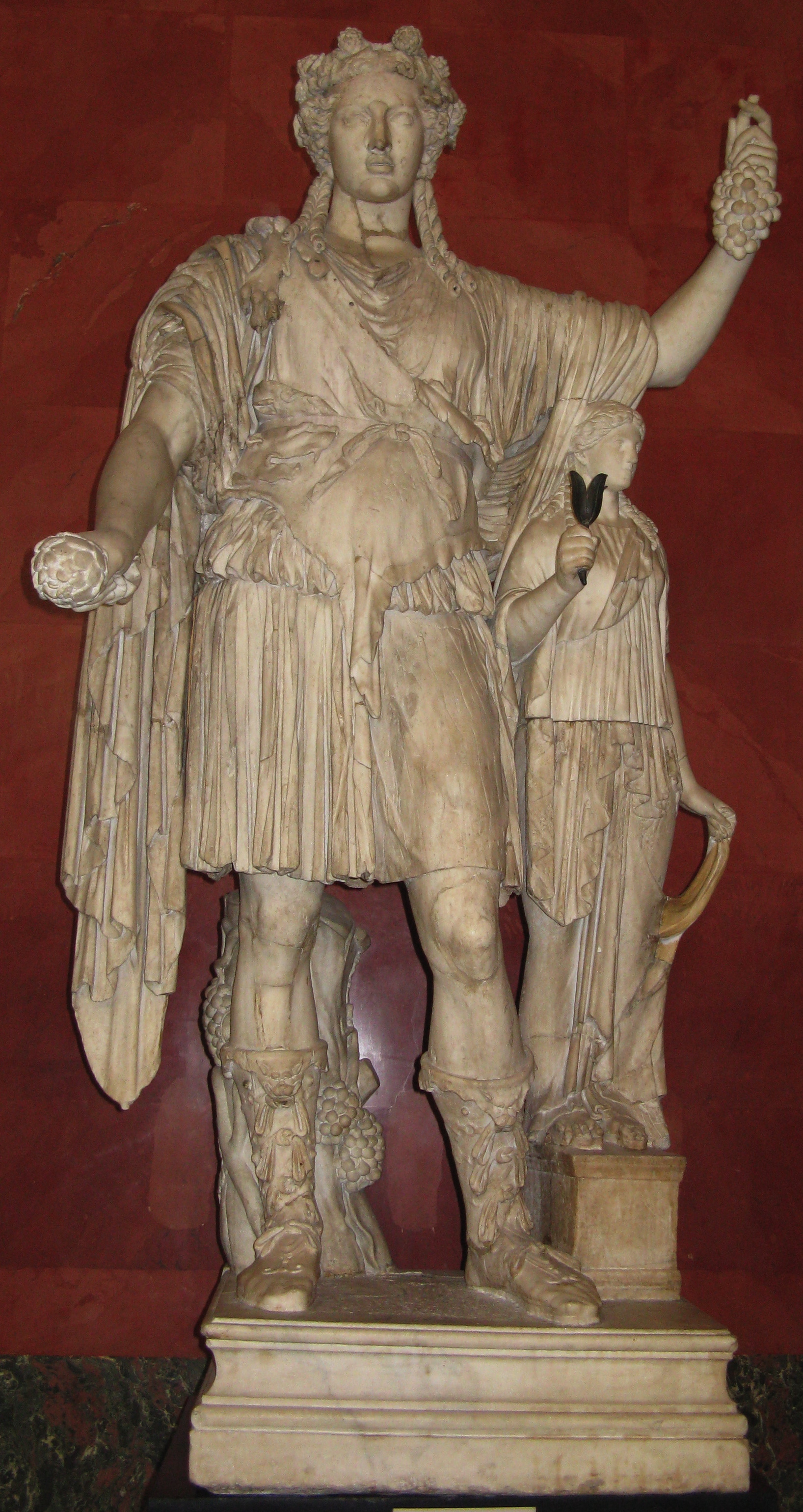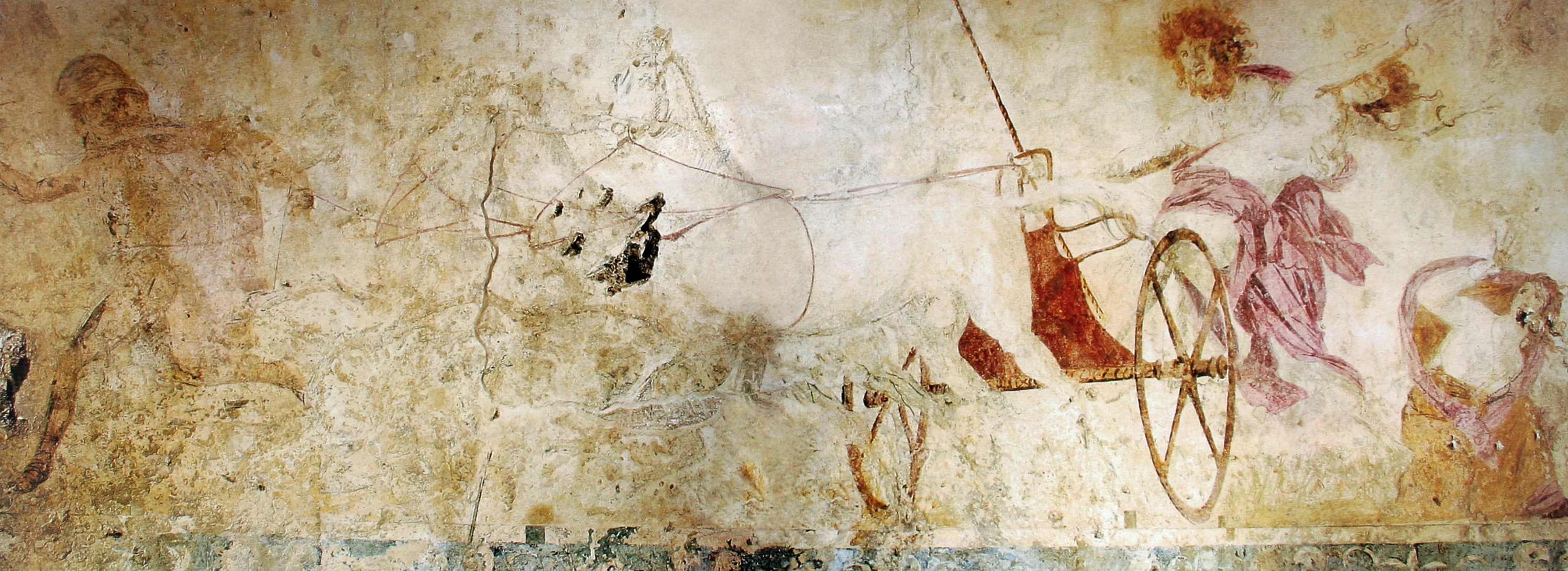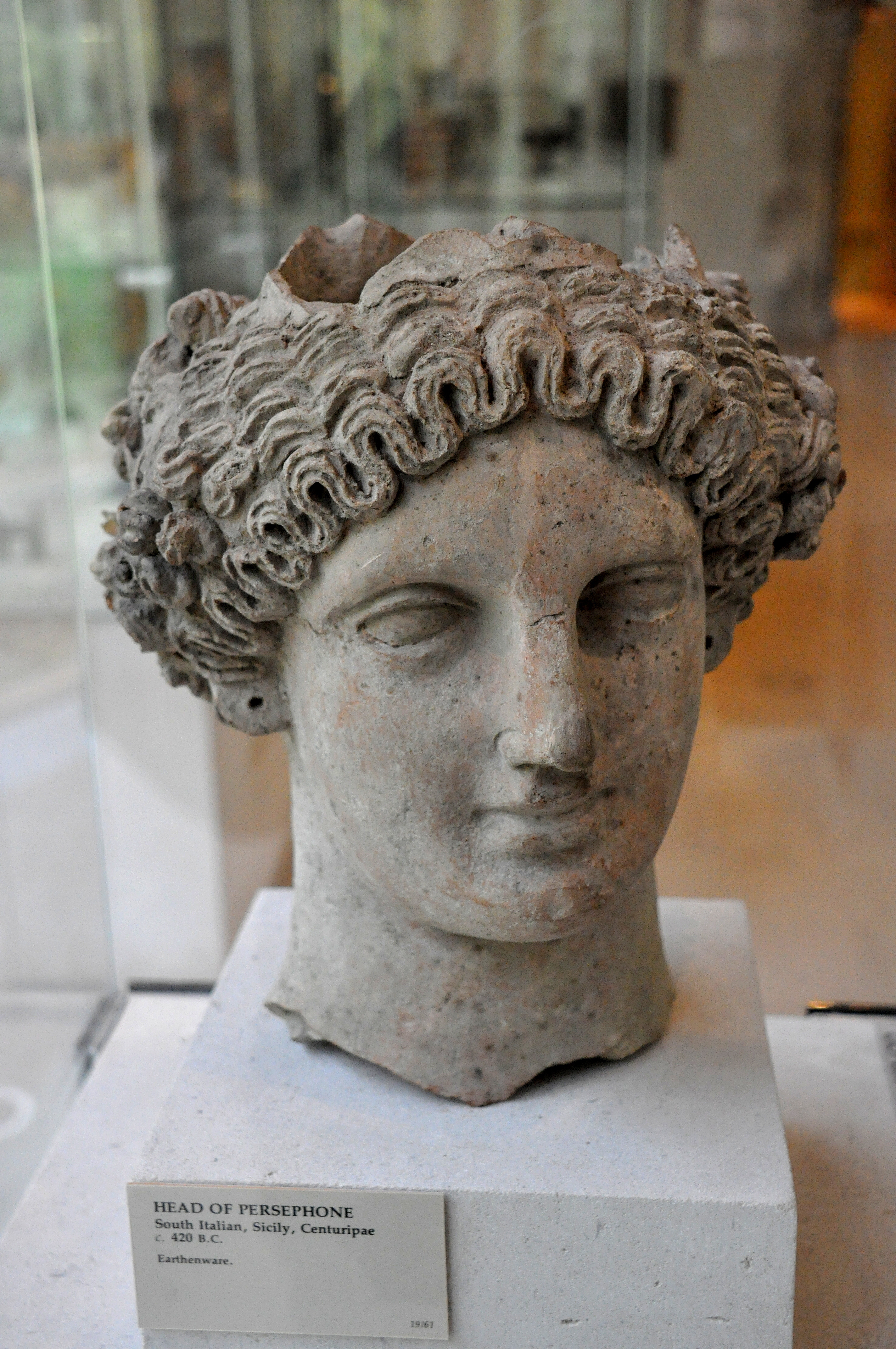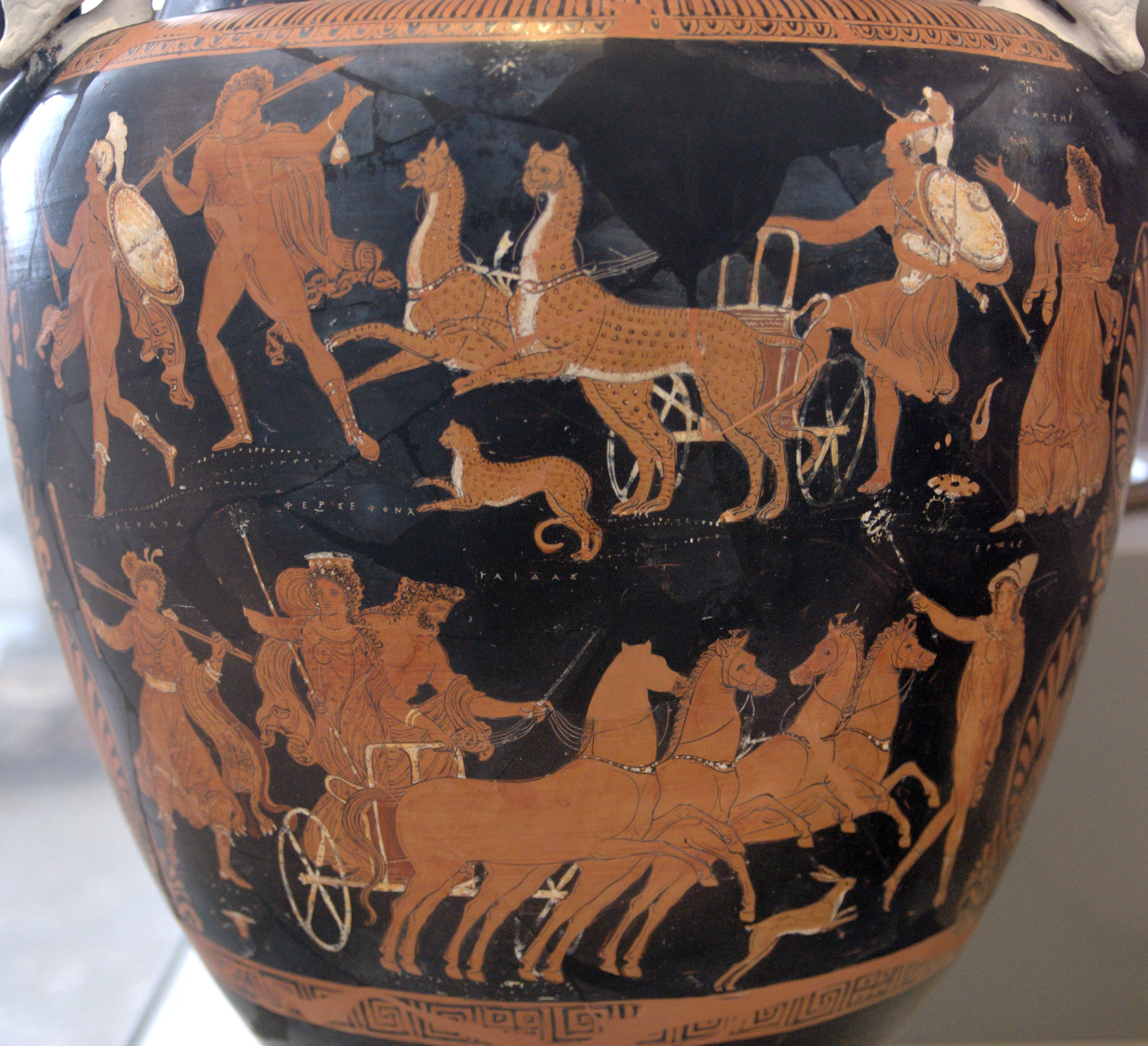Persephone (Greek deity)
Enlarge text Shrink text- Brill's new Pauly online, 7 July 2014(Persephone; Kore; Περσεφόνη; Κόρη; Greek goddess; daughter of Zeus and Demeter; defining myth told in the Homeric hymn to Demeter; Greek equivalent of the Roman goddess Proserpina)
- Wikipedia, 7 July 2014(Persephone; Kore; Περσεφόνη; Κόρη; daughter of Zeus and the harvest goddess Demeter; queen of the Underworld; vegetation goddess; central to the Eleusinian mysteries; equivalent to the Roman goddess Proserpina; other forms of name: برسفون; Persefona; Персефона = Persefona; Пэрсэфона ; Perzefona; Persefone; Parsefuna; Persefono; Pertsefone; پرسفونه; 페르세포네; פרספונה = Persefoneh; Perszephoné; ペルセポネー = Perusepone; 珀耳塞福涅 = Poersaifunie)
- ويكيبيديا، 29 أبريل 2018(بيرسيفون/برسفون/بيرسيفونى؛ ابنة ديميتر ربة الأراضى المنزرعة من زيوس)
In ancient Greek mythology and religion, Persephone ( pər-SEF-ə-nee; Greek: Περσεφόνη, romanized: Persephónē, classical pronunciation: [per.se.pʰó.nɛː]), also called Kore ( KOR-ee; Greek: Κόρη, romanized: Kórē, lit. 'the maiden') or Cora, is the daughter of Zeus and Demeter. She became the queen of the underworld after her abduction by her uncle Hades, the king of the underworld, who would later also take her into marriage. The myth of her abduction, her sojourn in the underworld, and her cyclical return to the surface represents her functions as the embodiment of spring and the personification of vegetation, especially grain crops, which disappear into the earth when sown, sprout from the earth in spring, and are harvested when fully grown. In Classical Greek art, Persephone is invariably portrayed robed, often carrying a sheaf of grain. She may appear as a mystical divinity with a sceptre and a little box, but she was mostly represented in the process of being carried off by Hades. Persephone, as a vegetation goddess, and her mother Demeter were the central figures of the Eleusinian Mysteries, which promised the initiated a happy afterlife. The origins of her cult are uncertain, but it was based on ancient agrarian cults of agricultural communities. In Athens, the mysteries celebrated in the month of Anthesterion were dedicated to her. The city of Locri Epizephyrii, in modern Calabria (southern Italy), was famous for its cult of Persephone, where she is a goddess of marriage and childbirth in this region. Her name has numerous historical variants. These include Persephassa (Περσεφάσσα) and Persephatta (Περσεφάττα). In Latin, her name is rendered Proserpina. She was identified by the Romans as the Italic goddess Libera, who was conflated with Proserpina. Myths similar to Persephone's descent and return to earth also appear in the cults of male gods, including Attis, Adonis, and Osiris, and in Minoan Crete.
Read more on Wikipedia >
 Personality
Personality
























